Enhancing Solid Level Measurement:
Exploring the Versatility of Radar Level Meters and Solid Level Sensors
In the realm of industrial processes and
manufacturing, accurate
level measurement for solid materials is essential for
maintaining efficiency, safety, and quality control. Traditionally, solids
level measurement has posed challenges due to varying material properties and
environmental conditions. However, with advancements in technology, the
integration of radar level meters and solid level sensors has revolutionized
how industries approach this critical aspect of their operations.
Solid Level Sensors: Unveiling Precision in
Measurement
Solid level sensors have emerged as
indispensable tools for various industries, including grain,food and beverage,
pharmaceuticals, chemicals, and mining. These sensors utilize a range of
technologies to precisely determine the level of solid materials in containers,
silos, and hoppers. One notable technology employed in radar solid level
sensors is the 4-20mA current loop, a widely adopted standard in industrial
automation.
The 4-20mA level sensor operates by varying
the current signal within this range to indicate the level of the solid
material. This technology offers several advantages, including its ability to
transmit signals over long distances without significant signal degradation.
Furthermore, it can withstand electrical noise and interference often
encountered in industrial environments. As a result, these solid level sensors
provide real-time and reliable level data that can be seamlessly integrated
into process control systems.
Radar Level Meters: Pioneering Solid Level
Measurement
Radar level meters have proven to be a
breakthrough technology in the field of solid level measurement. Traditionally
used for liquid level measurement, radar level meters have been adapted and
optimized to address the challenges posed by solid materials. These meters
employ electromagnetic waves to measure the time taken for a signal to travel
from the sensor to the material's surface and back. This data is then converted
into a precise level measurement.
One of the key advantages of radar level
meters for solid materials is their ability to overcome obstacles like dust,
vapors, and temperature fluctuations that often hinder other measurement
methods. Their non-contact level meter nature ensures that there is no physical
interference with the material being measured, reducing maintenance
requirements and increasing measurement accuracy.
Enhancing Solid Level Measurement with
Radar Level Meters
When it comes to measuring solid levels,
radar level meters bring a host of benefits to the table. Firstly, they can
accurately measure materials with varying densities, particle sizes, and
compositions. This versatility makes them suitable for applications in
industries dealing with powders, granules, aggregates, and other solid
materials.
Secondly, radar level meters offer
continuous measurement, enabling real-time monitoring of material levels. This
feature is particularly valuable in processes that require consistent feed
rates or alert systems to prevent overflows or shortages. The ability to
monitor and respond promptly enhances operational efficiency and reduces
downtime.
Conclusion
In the world of solid level measurement,
the convergence of solid level sensors and radar level meters has opened up new
horizons for industries seeking accuracy, reliability, and efficiency. The
integration of 4-20mA level sensors ensures robust data transmission, while
radar level meters provide non-contact, obstacle-agnostic measurements, perfect
for the complexities of solid materials. As technology continues to advance, we
can expect further innovations that refine these measurement methods,
empowering industries to achieve unprecedented levels of precision and control
in their processes.
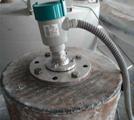
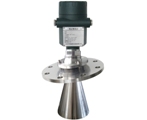
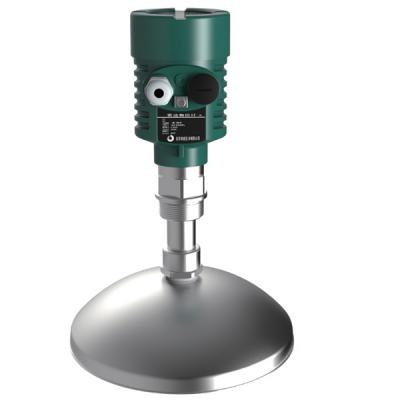 26GHz Pulse Radar Level Instrument2017/04/27SKRD90 series radar level transmitter is designed to be used as non-contact and continuous level measurement instruments of liquids pulps and bulk solids.view
26GHz Pulse Radar Level Instrument2017/04/27SKRD90 series radar level transmitter is designed to be used as non-contact and continuous level measurement instruments of liquids pulps and bulk solids.view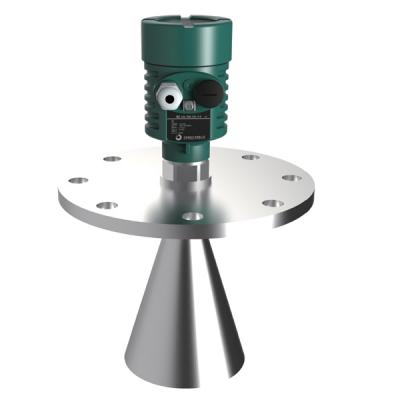 6.8GHz Pulse Radar Level Instrument2017/04/27SKRD50 series radar level transmitter adopts 6.8GHz transmission frequency technology; it is a kind of non-contact and continuous level measurement device. SKRD 50 series radar level transmitters output 4-20mA analog signals;view
6.8GHz Pulse Radar Level Instrument2017/04/27SKRD50 series radar level transmitter adopts 6.8GHz transmission frequency technology; it is a kind of non-contact and continuous level measurement device. SKRD 50 series radar level transmitters output 4-20mA analog signals;view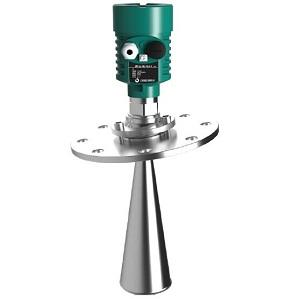 SKRD93 series Radar level meter-level sensor for solids2019/08/29Application: Strong dew/dust/crystal solid level measurement instrumentsMax. range: 70mProcess connection: Screw, flangesProcess temperature: -40~120°CProcess pressure: -0.1~4.0MpaAccuracy: ±15mmFre...view
SKRD93 series Radar level meter-level sensor for solids2019/08/29Application: Strong dew/dust/crystal solid level measurement instrumentsMax. range: 70mProcess connection: Screw, flangesProcess temperature: -40~120°CProcess pressure: -0.1~4.0MpaAccuracy: ±15mmFre...view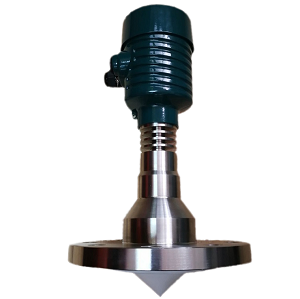 Resin level sensor2023/02/03Resin level measurementResin is a yellowish viscous liquid. In industrial production, it is often necessary to measure the height or level of the resin in the tank, resin silo or hopper for industrial...view
Resin level sensor2023/02/03Resin level measurementResin is a yellowish viscous liquid. In industrial production, it is often necessary to measure the height or level of the resin in the tank, resin silo or hopper for industrial...view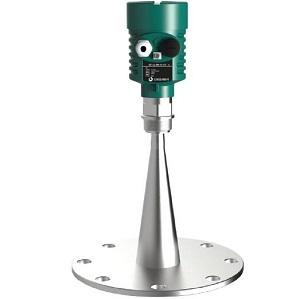 Non-contact radar level transmitter2020/02/08These transmitters allow radar levelmeasurement without any contact with the liquid and no probe is used, it is noncontact level measurement. These level transducers work on two differentprinciples. T...view
Non-contact radar level transmitter2020/02/08These transmitters allow radar levelmeasurement without any contact with the liquid and no probe is used, it is noncontact level measurement. These level transducers work on two differentprinciples. T...view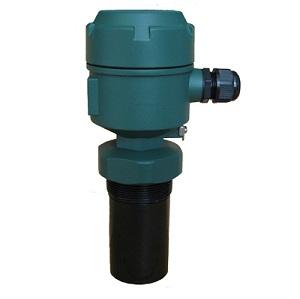 Ultrasonic solid level sensors2020/02/07Principle of Ultrasonic solid level meterUltrasonic level sensors for solid objectsfollow a principle similar to those for liquids but the measuring object, inthis case, is solids. The ultrasonic wave...view
Ultrasonic solid level sensors2020/02/07Principle of Ultrasonic solid level meterUltrasonic level sensors for solid objectsfollow a principle similar to those for liquids but the measuring object, inthis case, is solids. The ultrasonic wave...view